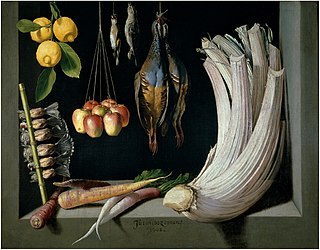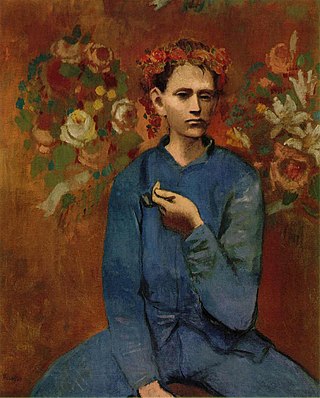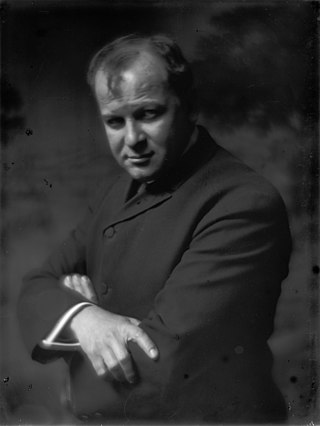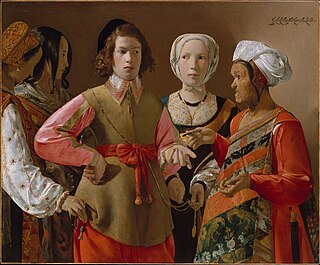
Édouard Manet was a French modernist painter. He was one of the first 19th-century artists to paint modern life, as well as a pivotal figure in the transition from Realism to Impressionism.

Pierre-Auguste Renoir was a French artist who was a leading painter in the development of the Impressionist style. As a celebrator of beauty and especially feminine sensuality, it has been said that "Renoir is the final representative of a tradition which runs directly from Rubens to Watteau."

Edgar Degas was a French Impressionist artist famous for his pastel drawings and oil paintings.

Jan Brueghelthe Elder was a Flemish painter and draughtsman. He was the son of the eminent Flemish Renaissance painter Pieter Bruegel the Elder. A close friend and frequent collaborator with Peter Paul Rubens, the two artists were the leading Flemish painters in the first three decades of the 17th century.

Suzanne Valadon was a French painter who was born Marie-Clémentine Valadon at Bessines-sur-Gartempe, Haute-Vienne, France. In 1894, Valadon became the first woman painter admitted to the Société Nationale des Beaux-Arts. She was also the mother of painter Maurice Utrillo.

A still life is a work of art depicting mostly inanimate subject matter, typically commonplace objects which are either natural or human-made.

Garçon à la Pipe is an oil on canvas painting by Pablo Picasso. It was painted in 1905 when Picasso was 24 years old, during his Rose Period, soon after he settled in the Montmartre area of Paris. The painting depicts a Parisian adolescent boy who holds a pipe in his left hand and wears a garland of flowers on his head, surrounded by two floral decorations. The subject was a local boy named "P’tit Louis" who died at a young age. The painting is listed as one of the most expensive paintings, after being sold at Sotheby's auction for $104 million on 5 May 2004. It is currently the fifth highest selling painting by Picasso.

George Benjamin Luks was an American artist, identified with the aggressively realistic Ashcan School of American painting.

Martin Johnson Heade was an American painter known for his salt marsh landscapes, seascapes, and depictions of tropical birds, as well as lotus blossoms and other still lifes. His painting style and subject matter, while derived from the romanticism of the time, are regarded by art historians as a significant departure from those of his peers.

Marie-Denise Villers was a French painter who specialized in portraits.

Adriaen van Utrecht was a Flemish painter known mainly for his sumptuous banquet still lifes, game and fruit still lifes, fruit garlands, market and kitchen scenes and depictions of live poultry in farmyards. His paintings, especially the hunting and game pieces, show the influence of Frans Snyders. The two artists are considered the main inventors of the genre of the pronkstillevens, i.e. still lifes that emphasized abundance by depicting a diversity of objects, fruits, flowers and dead game, often together with living people and animals. Van Utrecht also painted a number of flower still lifes. He was a regular collaborator with leading Antwerp painters who had been pupils or assistants of Peter Paul Rubens, such as Jacob Jordaens, David Teniers the Younger, Erasmus Quellinus II, Gerard Seghers, Theodoor Rombouts, Abraham van Diepenbeeck and Thomas Willeboirts Bosschaert.

Anne Vallayer-Coster was a major 18th-century French painter best known for still lifes. She achieved fame and recognition very early in her career, being admitted to the Académie Royale de Peinture et de Sculpture in 1770, at the age of twenty-six.

The Fortune Teller is an oil painting of circa 1630 by the French artist Georges de La Tour. The work was uncovered in about 1960 and purchased that year by the Metropolitan Museum of Art in New York. François Georges Pariset described the painting in The Metropolitan Museum of Art Bulletin, attributing it to La Tour—a likely choice given the calligraphic signature at top right: "G. de La Tour Fecit Luneuilla Lothar". Its authenticity has been questioned in the intervening years, notably by the English art historian Christopher Wright, but The Fortune Teller is generally accepted as La Tour's work. The artist is better known for his chiaroscuro religious compositions, in which the figures are illuminated by a single light source and lack the elaborate costume detail of The Fortune Teller's characters.

Realism in the arts is generally the attempt to represent subject matter truthfully, without artificiality and avoiding speculative and supernatural elements. The term is often used interchangeably with naturalism, although these terms are not synonymous. Naturalism, as an idea relating to visual representation in Western art, seeks to depict objects with the least possible amount of distortion and is tied to the development of linear perspective and illusionism in Renaissance Europe. Realism, while predicated upon naturalistic representation and a departure from the idealization of earlier academic art, often refers to a specific art historical movement that originated in France in the aftermath of the French Revolution of 1848. With artists like Gustave Courbet capitalizing on the mundane, ugly or sordid, realism was motivated by the renewed interest in the common man and the rise of leftist politics. The realist painters rejected Romanticism, which had come to dominate French literature and art, with roots in the late 18th century.

Study of a Young Woman is a painting by the Dutch artist Johannes Vermeer, completed between 1665 and 1667, and now in the Metropolitan Museum of Art, New York.

Still life paintings by Vincent van Gogh (Paris) is the subject of many drawings, sketches and paintings by Vincent van Gogh in 1886 and 1887 after he moved to Montmartre in Paris from the Netherlands. While in Paris, Van Gogh transformed the subjects, color and techniques that he used in creating still life paintings.

Young Girls at the Piano is an oil-on-canvas painting by French artist Pierre-Auguste Renoir, a leading painter in the development of the Impressionist style. The painting represents his late work period (1892–1919). It was completed in 1892 as an informal commission for the Musée du Luxembourg. Renoir painted three other variations of this composition in oil and two sketches, one in oil and one in pastel. Known by the artist as repetitions, they were executed to fulfill commissions from dealers and collectors. The work is on public display at the Musée d'Orsay in Paris, Metropolitan Museum of Art in New York, and the Musée de l'Orangerie in Paris.

Berthe Morisot with a Bouquet of Violets is an 1872 oil painting by Édouard Manet. It depicts fellow painter Berthe Morisot dressed in black mourning dress, with a barely visible bouquet of violets. The painting, sometimes known as Portrait of Berthe Morisot, Berthe Morisot in a black hat or Young woman in a black hat, is in the collection of the Musée d'Orsay in Paris. Manet also created an etching and two lithographs of the same composition.

Imperial Fritillaries in a Copper Vase is an oil painting on canvas created by the post-impressionist painter Vincent van Gogh in Paris, 1887. The painting is now part of the collection of the Musée d'Orsay in Paris, France. This work was made at a time of the life of Van Gogh when he first encountered influences from Impressionists and became aware of light and color, implementing it in his paintings. This painting presages some of his most famous subsequent works, and stands out from other still lifes because of the implementation of mixed techniques and complementary colors.

The Spanish Girl in Reverie is a 19th-century oil painting by Washington Allston. Done in oil on canvas, the painting depicts a young Spanish girl waiting the return of her lover from war. The painting is currently in the collection of the Metropolitan Museum of Art.




















